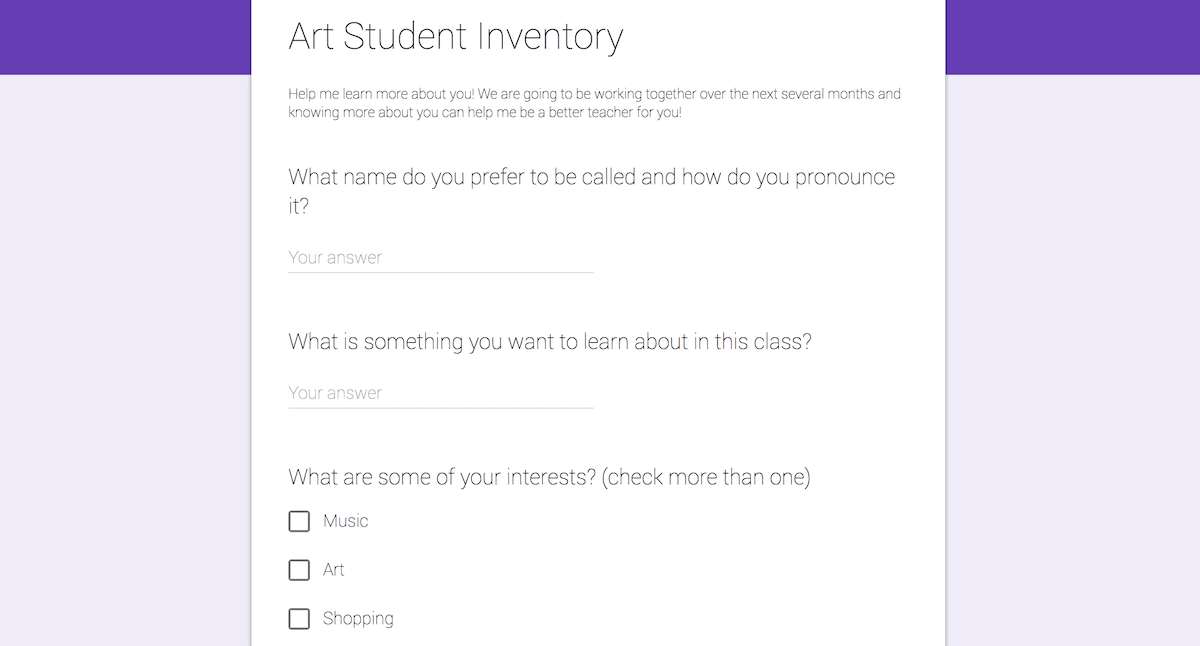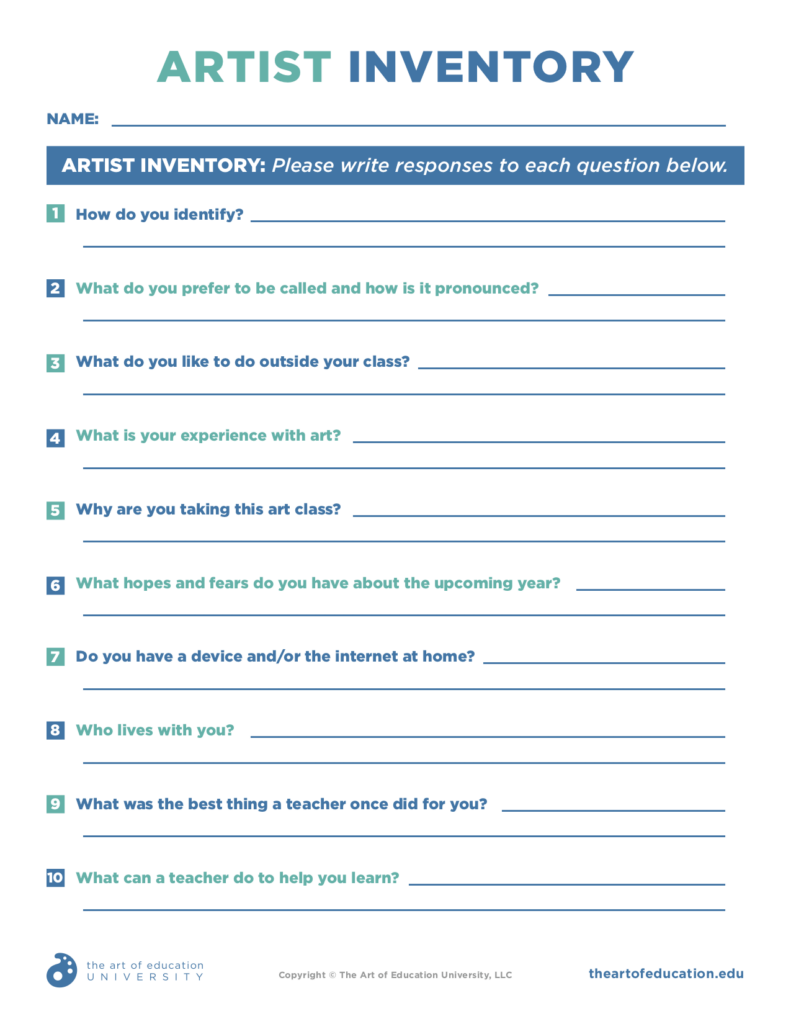As an art teacher, you’re always changing your projects, introducing new artists, or trying new materials. But when was the last time you changed your first day agenda? The first day can often be overlooked due to time constraints or logistical demands, but any time with your students is valuable time. With proper planning and execution, you can create a first day where you lay the groundwork for the rest of the class. You can establish a positive relationship with your students and engage them with a meaningful activity— setting the tone for the rest of the year.
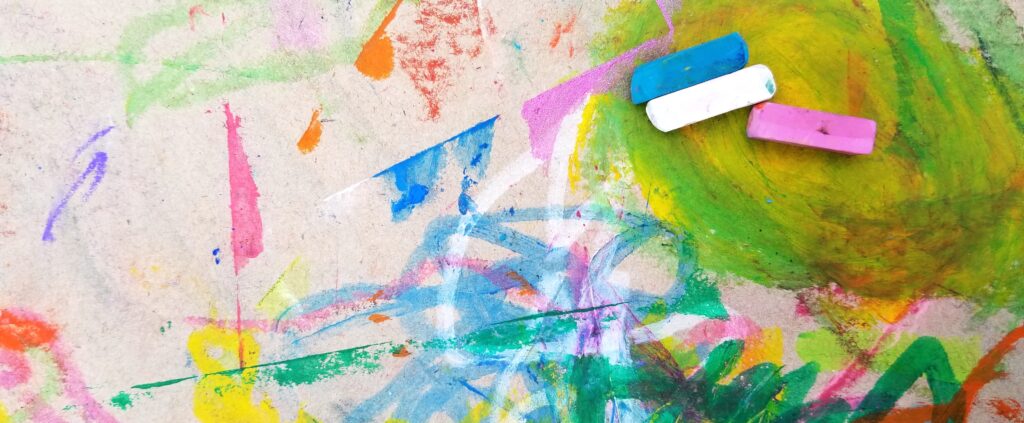
Save your syllabus and classroom expectations for another time, and follow these steps for the best first day.
Step 1: What should students learn from you?
Rather than starting off with attendance, begin class by welcoming the students and introducing yourself. This is your opportunity to model and initiate a relationship with the class. After all, students want to know who they are spending their time with this year. Sharing these details can help build bridges. It’s our unique qualities students sometimes connect with most. Traditional introductions can be stale and expected, so try some of these new approaches to pique their interest and engage them right from the beginning.
- Instead of introducing yourself by name, share how you identify:
Sharing the various aspects of your identity (race, gender, pronouns, etc.) can communicate to all students, particularly your marginalized students, you’re an ally and aware of your identifiers. Let them know this is a safe space.
- Instead of listing your credentials, share your art journey:
Sharing your art story can illustrate to students that you didn’t become a great artist instantly. You sat in their seat as a young artist and experienced your own trials and tribulations.
- Instead of staying private, share what you are doing when you’re not teaching:
Remind students you don’t live at the school and sleep in your storage closet. You have other aspects of your life that inform your teaching and artwork. This can include family-life, hobbies, music, traveling, etc.
- Instead of protecting yourself, open up and share what excites you and unnerves you about the upcoming year:
Taking a minute on the first day to be vulnerable and acknowledging that, like them, you’re anxious and looking forward to the year ahead for various reasons can help lay the foundation for a safe space, reflection, honesty, and risk-taking.
Step 2: What should they learn about the class?
After you have introduced yourself, the next step is to hook students into the class so they leave excited to return the next day. Many students anticipate tired, forced ice-breakers and teachers who talk at them on the first day. They are expecting to be told where they are going to sit, what they will do throughout the class, and how to earn an A. But these logistics can wait and should take a backseat to something more engaging. Communicate what you really want them to know about their upcoming experience in your class. As art teachers, we pride ourselves on being different. Here we can reinforce that message through activities for students.
- Instead of handing out your syllabus or procedures, create a hands-on activity:
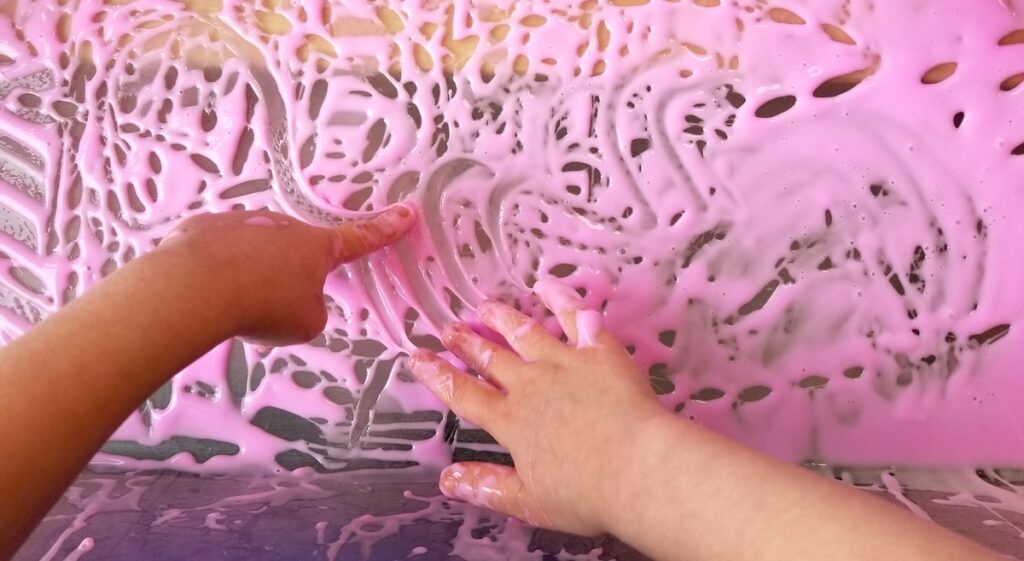
Take a minute to think about what you really want them to know about the course. It might sound something like, “You will learn to be artists,” or, “This class will change how you see the world.” After you’ve identified your day one mantra, create a hands-on activity communicating your message. The goal is to give them a taste of what is to come and leave them wanting more.
- Instead of having a pre-established seating chart, allow students to pick their seat for the first day:
Giving your students an opportunity to pick their seats on day one can be very informative. Recognize who students sit by and where in the room. Start to learn student dynamics as many of them have a relationship with each other prior to your class. Delaying a formal seating chart can also give you time to receive and review any 504/IEP or other documents with seating accommodations and avoid a change after-the-fact.
Step 3: What should you learn from students?
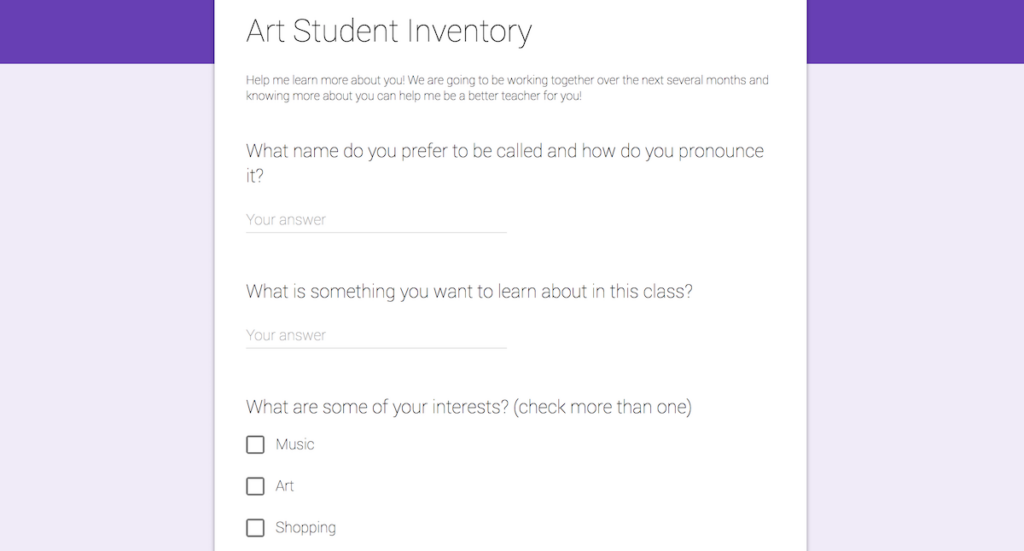
Since the students are now more excited about the class, they are more likely to share intimate details of themselves. So, save the last few minutes and have students complete a quick inventory form of information you want to know about them. Knowing your students on a deeper level can help you better understand them as learners and more effectively plan for the upcoming year. Here are some helpful hints to collect information efficiently and use it in a way that supports all students.
- Instead of having students complete a physical form, go digital:
Many schools are now 1:1 with technology. Using a digital form can help you analyze the results more efficiently and retain them for future use. For example, Google Forms can summarize the information for you so you can quickly identify trends and themes. This is very helpful for those who teach 100+ students.
- Instead of only asking their name, ask what they prefer to be called and the pronunciation:
For a number of personal reasons, some students can be uncomfortable with their legal name. Giving students an opportunity to share their preferred name can further engage the student and establish you and your room as a safe space.
- Instead of taking attendance aloud, use the completed inventory sheets:
Ask anyone with a non-traditional name—the first day of school can rank among the worst. When a teacher misreads, or even butchers, a student’s name in the first few minutes of class, the student can feel embarrassed and ostracized. Not a great way to start the year. Developing an inventory form can be specific to each teacher. By asking each question with purpose, they can actually be used in your planning or work with a student.
Download this Artist Inventory to use in your classroom:
As the saying goes, you never get a second chance to make a first impression. How you welcome your students on the first day of class can have a significant impact on how they perceive you, the course, and their future art experience. Starting off on the right foot and not getting bogged down with logistics can help you set the tone for a successful year rooted in relationships, learning, and artmaking.
What other information do we need to know from students?
What are some effective first-day activities for art students?
Magazine articles and podcasts are opinions of professional education contributors and do not necessarily represent the position of the Art of Education University (AOEU) or its academic offerings. Contributors use terms in the way they are most often talked about in the scope of their educational experiences.
